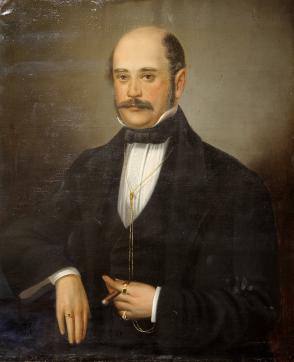Because of advances in transporting ourselves quickly across the world, contagious diseases can be easily spread. Air transportation is the posterchild for crossing vast distances rapidly, and one initial US response to the Wuhan coronavirus was to institute airport checkpoints. But, it may not have been the most effective and economic response. Viruses are transmitted between individuals through the air and physical contact. When the at-risk population is enclosed, on a cruise ship or an airport, transmission accelerates because of numerous contaminated surfaces that are being touched continuously.
In the presence of active infections, we can protect populations with vaccines when they are available, isolate individuals, and close high-risk locations, like schools and stores, as we see currently in China. But handwashing, while low-tech and not utilizing the latest darling of innovation, artificial intelligence, is perhaps the best way for individuals to protect themselves. [1]
The Study
The researchers made use of world air-traffic data identifying the busiest 2,500 airports, which account for nearly 99% of all travel and traffic. Their model including incoming and outgoing flights as well as waiting time from arrival at their departing airport until leaving the airport at their final destination – the longer the waiting time, the greater the opportunity to be infected. They modified the classic model of epidemiology, which categorizes at-risk populations as susceptible, infected, or recovered to include a varying percentage in each group who had or had not washed their hands. Serendipitously, they modeled a "flu-type" disease with infectivity, the R0, as 3, consistent with numbers considered possible for the current Coronavirus. Their model also incorporated variable lengths of recovery, frequency of handwashing, and the percentage washing their hands. Using previous studies of travelers, they reasoned that about 20% of individuals in the airport have clean hands at any given time. [2] Finally, they quantified the resulting pandemic based on the number of individuals infected and how far the disease had spread globally over two weeks.
When running the model without consideration of handwashing, two points were clear. Large airports with lots of traffic generated lots of affected individuals. But size was not the only important factor; airport connectivity was also critical. Hub airports with less traffic but more direct connections to global mega-hub airports spread the disease more quickly across the globe; airports like Narita and Honolulu International.
The Results
- Increased handwashing from 20% to 60% at all airports reduce overall infections in individuals three-fold, from 1.5% to 0.5%. Similarly, it reduced the global "footprint" of disease by about 55%.
- As the effective duration of the disease increases or the R0 increases (think measles with an R0 of 12 to 18), handwashing is less effective. But these intrinsic characteristics of infection had little impact.
Of course, it is problematic to think that all airports will suddenly increase handwashing from 20 to 60%; after all, the WHO reports a 38% rate of handwashing compliance for hospitals globally. The researchers took this into account and offered scenarios where handwashing increased to that 60% number in the ten critical global airports (based on traffic and ultimate destinations), the ten crucial airports at the source of the disease, and all airports at the source of the infection. If we just required 60% of travelers at ten already identified airports near the infection's source, to wash their hands, there would be an approximately 25% reduction in the number of individuals infected and the global landmass impacted.
25% for just washing your hands.
It's a model, and it is limited. It uses an accepted, but simple model (SIR) of an infection's spread, and it treats the travelers in the airport as homogenous. Still, of course, there are cultural differences for hygiene and social contact.
While we wait for a universal flu vaccine, Dr. Sammelweis's recommendation to wash our hands remains the most effective means we have at our disposal to reduce the risk of infection for ourselves and our families.
[1] In one study, 44% of individuals touching contaminated surfaces were themselves contaminated. Washing with water alone reduced contamination to 23%, and the addition of plain soap reduced those at-risk to 8% - a five-fold reduction for a 2-minute treatment with no side effects, no need to consult a physician or obtain a prescription.
[2] 30% of travelers using public bathrooms do not wash their hands at all, and only about 70% of the remaining travelers wash their hands with soap and water for the recommended time resulting in 49.6% of travelers having clean hands as their exit from the bathroom.
Source: Hand-Hygiene Mitigation Strategies Against Global Disease Spreading Through Air-Transportation Network Risk Analysis DOI: 10.1111/risa.13438




